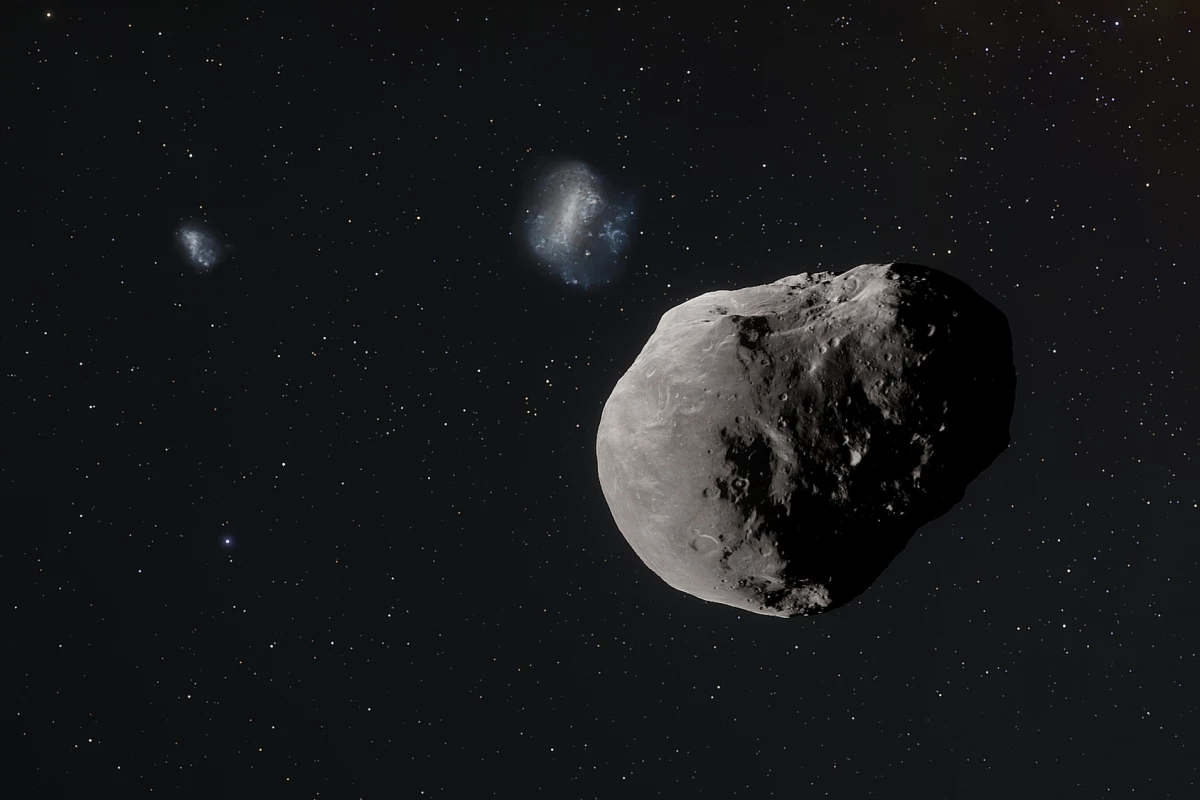There are plenty of rocks floating around the solar system, but Apophis has attracted more than its share of attention due to several projected close shaves with Earth in the coming decades. While most impacts have now been ruled out, a previously-overlooked factor has opened a small window for a possible collision in 2068.
Discovered in 2004, Apophis measures about 370 m (1,215 ft) wide, which is big enough to cause some serious damage if it were to collide with Earth. And that’s why it grabbed headlines soon after its discovery – calculations of its future orbit gave it the highest chance of colliding with Earth of any asteroid discovered up to that point.
The rock had a one in 300 chance of striking Earth in 2029, making it the first object to reach level 2 on the Torino Scale, which measures the likelihood and damage potential of space objects on a scale of zero to 10. Later it was briefly upgraded to level 4 – a record it still holds today – with the odds shortening to just 1 in 60.
As they usually do, further observations ruled out a collision in 2029, as well as during its next close encounter in 2036 and another in 2068. But now, a new study suggests that astronomers may need to reexamine their calculations for that lattermost date.

Davide Fanocchia of NASA’s Jet Propulsion Laboratory and Dave Tholen of the University of Hawaii claim to have detected a force known as the Yarkovsky effect acting on Apophis, which could change its orbit ever so slightly.
As an object orbits the Sun and rotates, its surface is heated and cooled. The thermal photons involved do carry momentum, so the changes in heat can slowly but surely nudge an object’s orbit. While it might take millions of years to see any major change in its path, asteroids have the luxury of time.
New observations of the asteroid using the Subaru Telescope earlier this year detected the Yarkovsky effect in action on Apophis. This hasn’t been factored into earlier estimations of its orbit.
“The new observations we obtained with the Subaru telescope earlier this year were good enough to reveal the Yarkovsky acceleration of Apophis, and they show that the asteroid is drifting away from a purely gravitational orbit by about 170 m (560 ft) per year, which is enough to keep the 2068 impact scenario in play,” says Tholen.
That doesn’t mean Apophis will hit Earth in 2068 – in fact, it doesn’t even necessarily mean the chances are higher. All it means is that our current projections of its orbit need to be revisited. Further calculations will be done to figure out how strong the Yarkovsky effect might be on the asteroid, as well as how it might affect its orbit.
Either way, Apophis will still be an attention-seeker for the next few decades. Its 2029 close approach will be the closest for an asteroid of its size in recorded history, passing within one-tenth the distance to the Moon. That’s closer than some of our satellites, and it will actually be visible to the naked eye in some parts of the world.
The new study was presented at the Division for Planetary Sciences meeting in October.
Source: University of Hawaii




